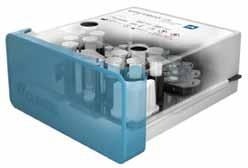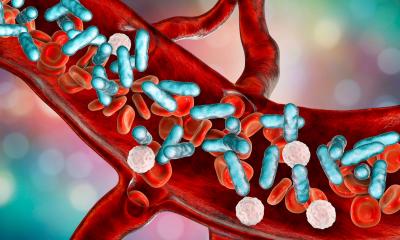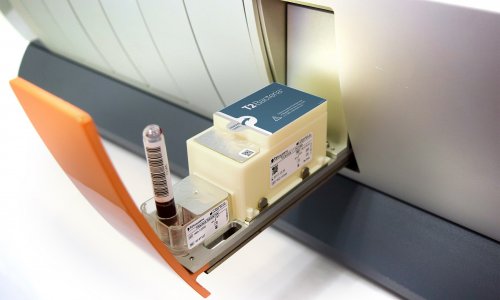System identifies more pathogens and antimicrobial resistances than any other
By integrating all necessary pre-analytical and analytical steps into one solution, the recently CE-marked Unyvero system, which is now commercially available in Europe, provides pathogen identification and antibiotic resistance marker information without needing expert staff and a sophisticated infrastructure, its manufacturer Curetis reports. Of even greater interest is its range of targets.

‘The first available application is for the diagnosis of pneumonia and it is able to identify 17 pathogens (16 bacteria, 1 fungus) and 22 antibiotic resistance markers in a single, automated run,’ the firm adds. ‘So far, there is no comparable system available on the market that combines the detection of as many pathogens and as many antimicrobial resistances as the Curetis system,’ according to Professor Ingo Autenrieth, Director of the Institute of Medical Microbiology and Hygiene at Tubingen University, who is currently evaluating the system in a multicentre clinical trial. In a performance evaluation using real-world patient samples, the Unyvero System was compared to standard microbiology techniques. It had a better than 95% specificity and identified 74 additional pathogens, e.g. mixed infections, missed by standard microbiology culture.
Further Unyvero Cartridges, e.g. to diagnose surgical site infections, sepsis and tuberculosis, are under development, to provide pathogen and resistance information within four hours and all simply operated by an assistant medical technician or nurse. The system can be placed wherever needed, and also integrated with the hospital information system.
‘The work flow is very easy,’ says Oliver Schacht, CEO of Curetis. ‘Four steps, and you’re done. This simple process with five-minute hands-on time ensures consistent work flow and reduces potential handling errors.’ First, the user transfers the patient’s sample into the Unyvero Sample Tube prefilled with specific reagents. Subsequently, the tube is handled by the Unyvero Lysator, which can process all types of body fluids e.g. sputum, aspirates, lavage samples and protected brush specimens. After lysis, the Unyvero Sample Tube with the processed sample and a Unyvero Master Mix Tube are inserted into the Unyvero Cartridge, which integrates all sample analysis steps to execute a complete test based on endpoint-PCR.
For quality control purposes a synthetic gene alongside each patient sample is processed. ‘As a physically closed system,’ Schacht adds, ‘the cartridge avoids spilling of sample fluids or reagents and minimises contamination risks. After use, it is compatible with standard waste disposal procedures of hospitals and laboratories. ‘Once the cartridge is loaded, the Unyvero Analyzer automatically performs the handling of the Cartridge, including DNA purification, amplification with endpoint PCR and the detection of the target sequences after hybridisation on a special array.’
Both the Unyvero Lysator and the Analyzer are controlled by the Unyvero Cockpit, which also guides the user through the workflow. ‘An integrated bar-code reader enables quick patient information entry and traceability throughout the entire workflow. The software manages automatic results generation and storage and supports users with detection of lot numbers and checking of expiry dates. Results are automatically processed and displayed without requiring any further interaction.’ Details: www.curetis.com.
10.07.2012











